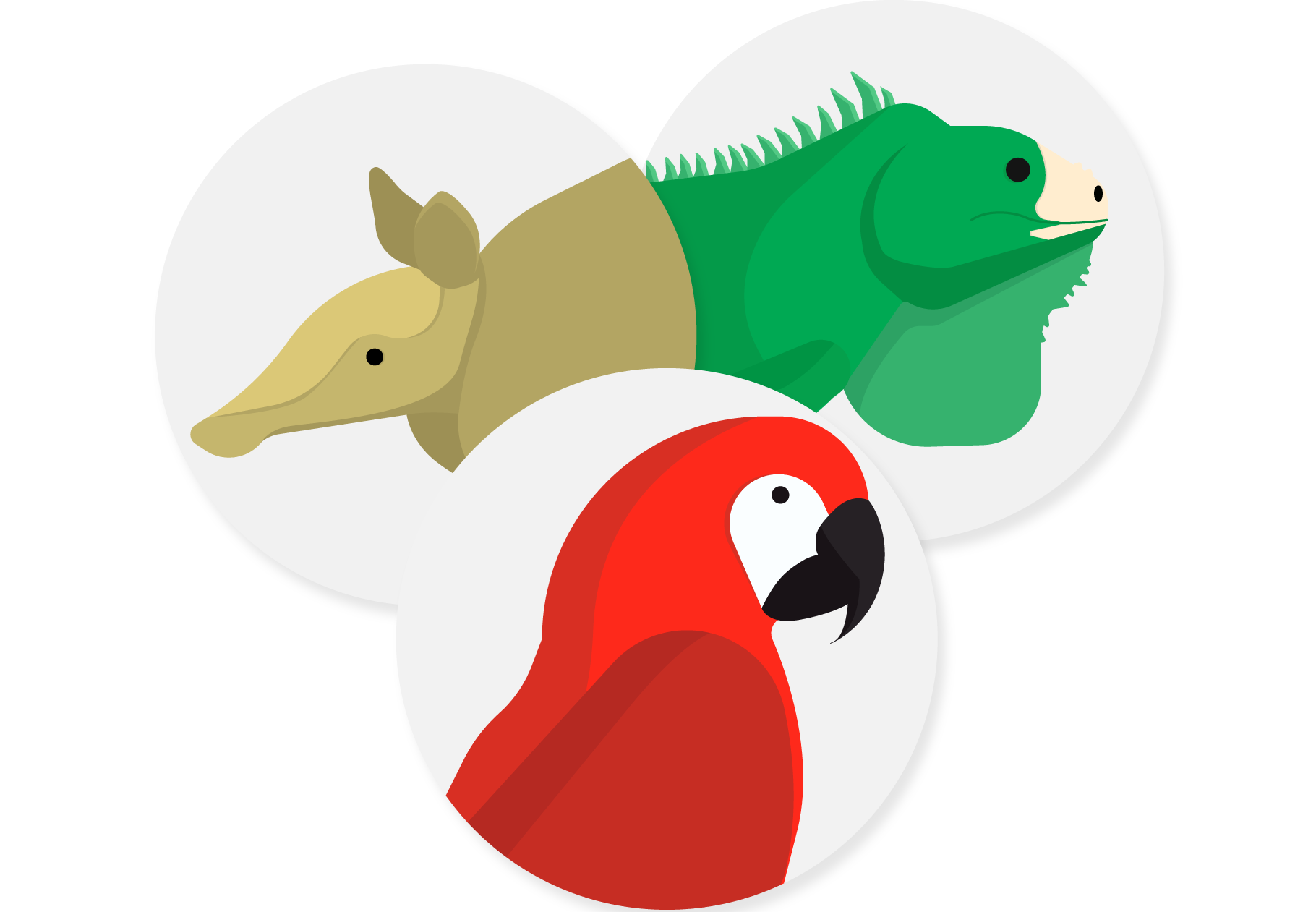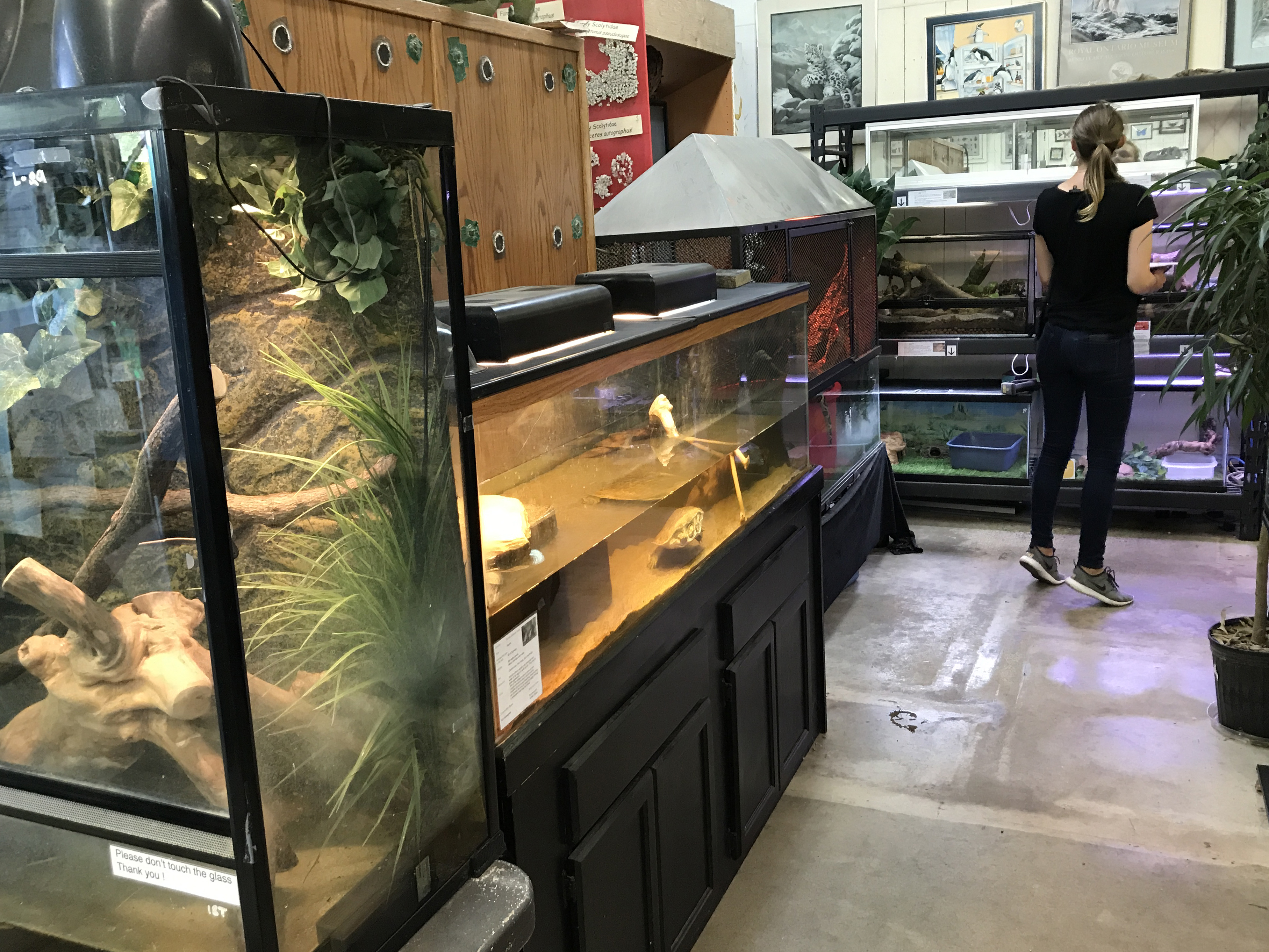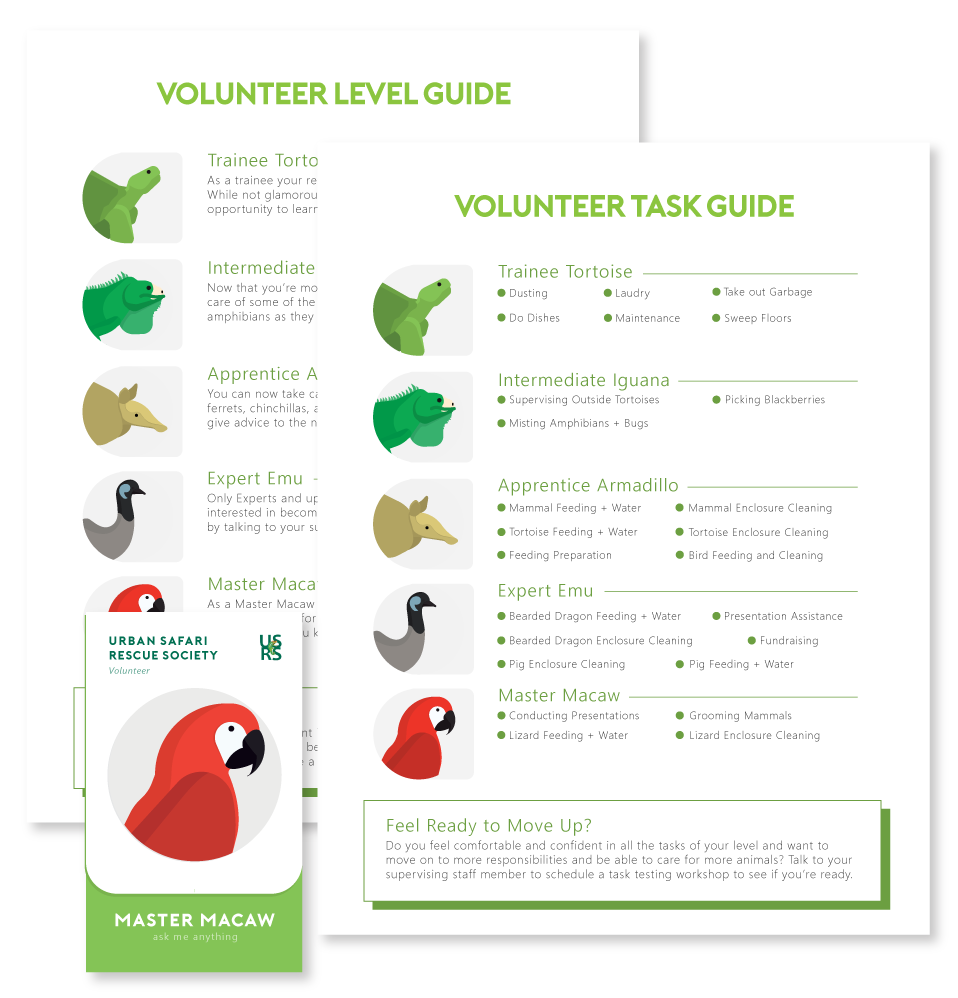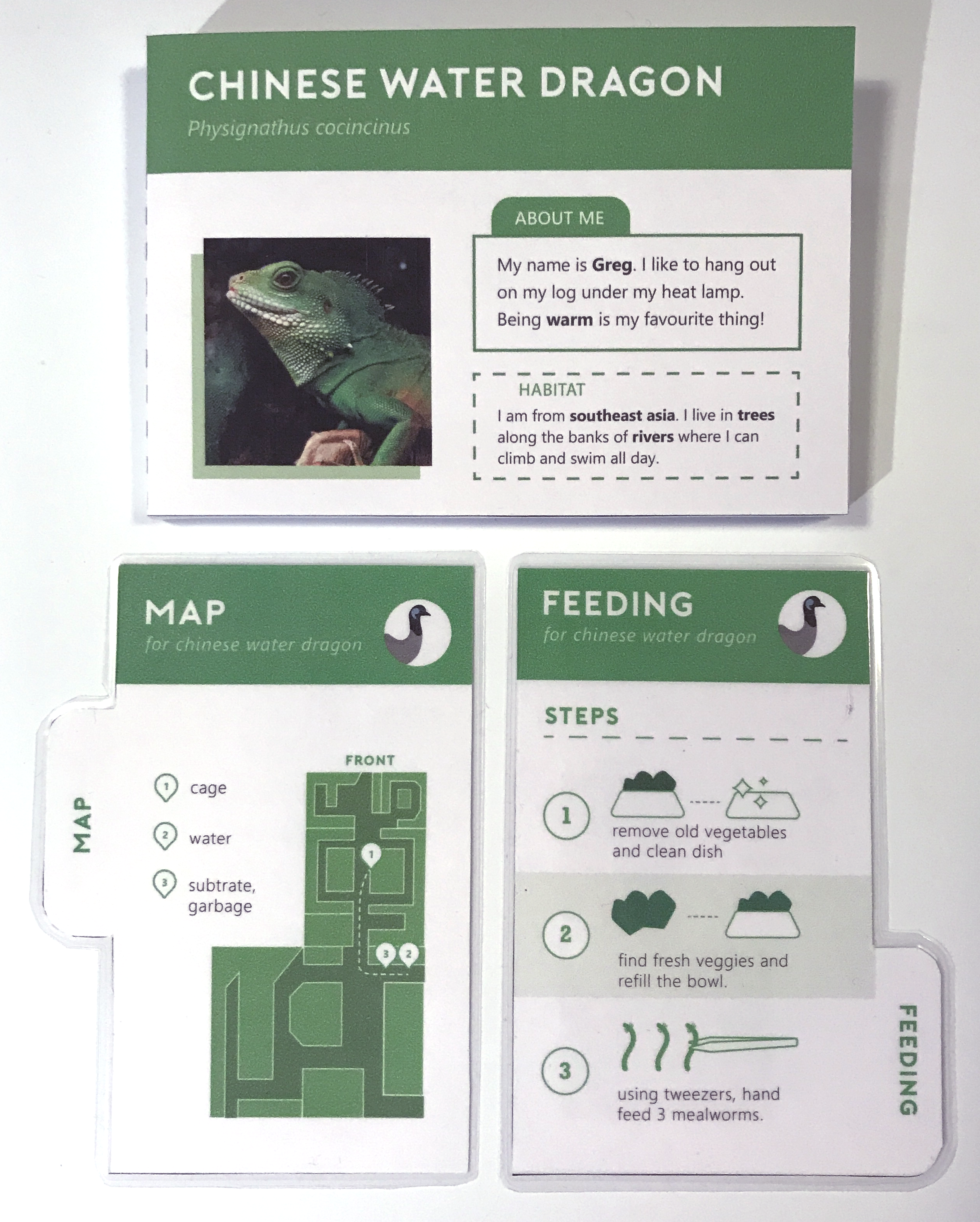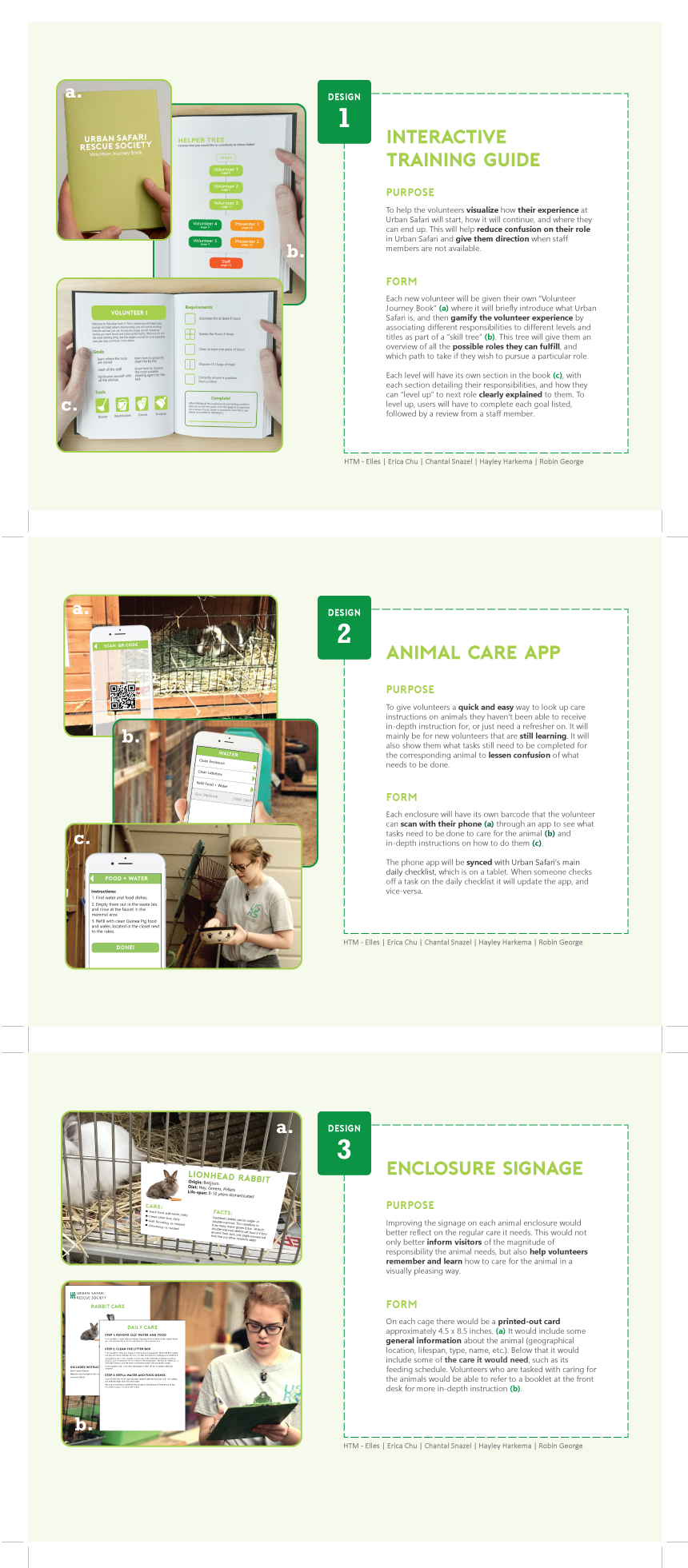
This term long project began with gathering as much information from as many people as possible. We met with the staff members and learned about them and their concerns, hopes, goals and thoughts about the rescue society.
We then met with several staff members ranging from novice, intermediate and expert skill levels. We learned all this through and ethnography study where we went to the rescue society and interviewed members, recorded notes and sketches and took lots of photos.
At this point we were just trying to learn who they are and what life was like at the rescue. We then compiled this information into several personas that we referenced throughout the project.
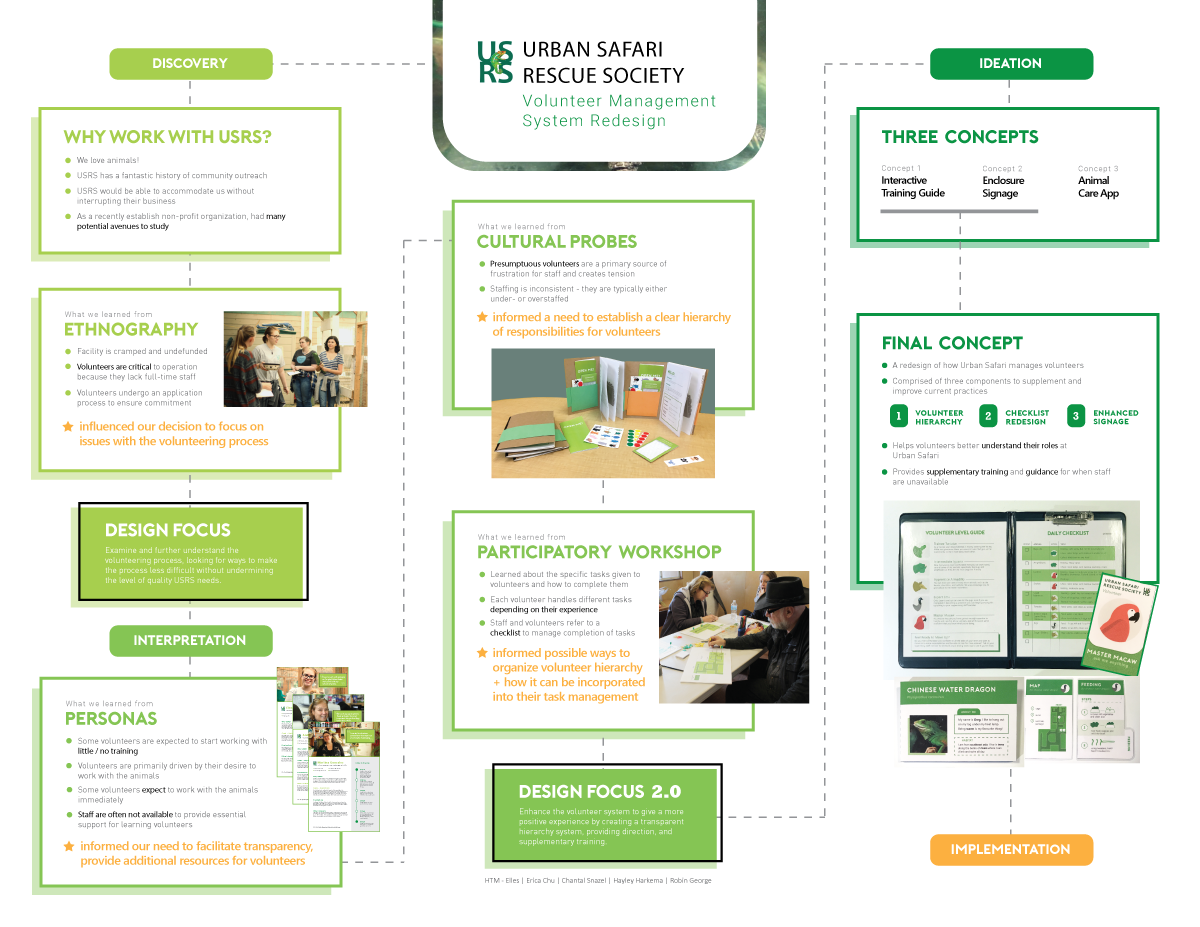
Next, we dove deep into life at the rescue using different design methods over several weeks including: cultural probes, journey maps, role playing, and participatory workshops. We began to understand the culture and the people involved with the society as we worked with them and identified three potential areas for intervention to explore:
- Training
- Volunteer/staff tension
- Spatial redesign
After deliberating, we chose to scope up a bit and investigate making the entire volunteer experience easier and more enjoyable for both staff and volunteers. We chose to scope up like that because we found that the problem with the most impact was the tension between volunteers and staff caused by a lack of hierarchy and training.
